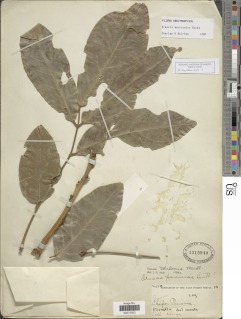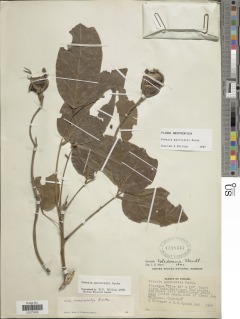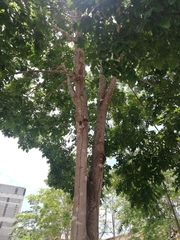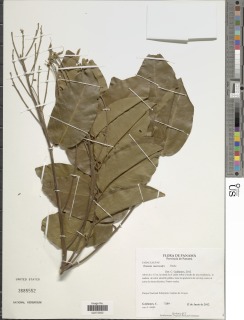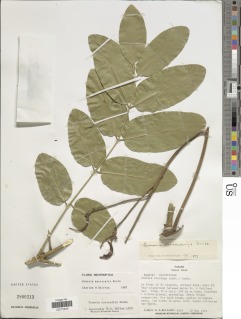

|
|
|
|
Family: Fabaceae
Conejito colorado, more...Alcornoque
|
Description: A tall tree with a straight, cylindrical trunk, buttressed at the base when large. Leaves are alternate, compound, usually with 9 leaflets, 8 in opposite pairs and one terminal. Leaflets are fairly large and dark, shiny green. The petiole is swollen at the base and cylindrical. When very small, saplings can have opposite leaves. Reproduction: Flowers have the typical keeled form of legumes, are fairly large. Fruits are small pods in which there are bright red seeds. Distribution: Widespread in the forests along the Canal, somewhat more numerous toward the Pacific slope, but not particularly common anywhere. Generally a tree of mature forest, but can be seen along roads and in towns; there are a number of large individuals in Gamboa. Similar Species: The large compound leaves with large, shiny leaflets, are pretty distinctive. A few bright red seeds can often be found beneath big trees, and these cinch the identification. LK lochla Lonchocarpus latifolius LK2 and LK ormocr Ormosia coccinea LK2 have leaflets of similar size and shape, but they are not shiny and have pubescence. Juveniles of LK pla1pi Platymiscium pinnatum LK2 can be confused with O. macrocalyx, since both have opposite leaves. Descripción: Árbol de 10 a 30 m de alto. Copa redondeada. Tronco con raíces tablares pequeñas en la base. Corteza exterior gris o marrón, a veces con manchas blancas. Ramitas terminales de color verde. Hojas imparipinnadas, alternas u opuestas, con 7-11 folíolos, opuestos en el raquis. Folíolos de 5-15 x 4-10 cm, ovados a oblongos, con ápice obtuso o cortamente acuminado, bordes enteros y base redondeada a obtusa. Pecíolo de 3-5 cm de largo y pulvinado en la base. Flores ligeramente lilas o moradas. Frutos en legumbres, de 3-10 cm de largo, verdes y constrictos entre las semillas, tornándose negros y dehiscentes al madurar. Semillas rojas. Datos Ecológicos: La especie crece a bajas y medianas elevaciones, en bosques húmedos o muy húmedos. En Panamá se encuentra en las provincias de Bocas del Toro, Chiriquí, Coclé, Colón, Los Santos y Panamá. Florece y fructifica de junio a enero. Las flores son visitadas por abejas, mariposas y otros insectos. Especies Parecidas: A menudo se confunde con LK ormocr Ormosia coccinea LK2 , pero en O. coccinea los folíolos se encuentran ligeramente cubiertos de pelos por el envés, los frutos son más pequeños y las semillas son de color rojo con negro. También se puede confundir con LK pla1pi Platymiscium dimorphandrum LK2 , pero en P. dimorphandrum las flores son amarillas y los frutos son legumbres samaroides y membranosas. Usos: La madera es utilizada en la ebanistería, carpintería, tornería, puentes y durmientes de ferrocarril. Con las semillas se fabrican collares y aretes. Apparently rare; known only from the old forest south of Armour Trail above the escarpment and from near the tower at Barbour Trail 700. Probably flowers in the middle of the rainy season. The fruits persist most of the year. Bocas Species Database Characteristics: Tree Notes: In Honduras, the tree is known as "Guataúl". |
|
|
|







